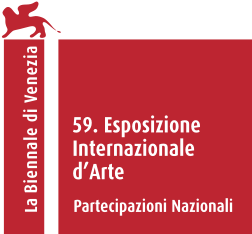Sovereignty

Simone Leigh, Façade, 2022. Thatch, steel, and wood, dimensions variable. Satellite, 2022. Bronze, 24 feet × 10 feet × 7 feet 7 inches (7.3 × 3 × 2.3 m) (overall). Courtesy the artist and Matthew Marks Gallery. Photo by Timothy Schenck. © Simone Leigh
Simone Leigh, Façade, 2022. Thatch, steel, and wood, dimensions variable. Satellite, 2022. Bronze, 24 feet × 10 feet × 7 feet 7 inches (7.3 × 3 × 2.3 m) (overall). Courtesy the artist and Matthew Marks Gallery. Photo by Timothy Schenck. © Simone Leigh
Simone Leigh represented the United States at the 59th International Art Exhibition of La Biennale di Venezia in 2022. Presented in the United States Pavilion, Simone Leigh: Sovereignty was commissioned by the Institute of Contemporary Art/Boston in cooperation with the U.S. Department of State’s Bureau of Educational and Cultural Affairs.
Simone Leigh: Sovereignty featured a new body of work made for the United States Pavilion. Characterized by an interest in performativity and affect, Leigh’s expansive practice parses the construction of Black femme subjectivity. Her large-scale sculptural works join forms derived from vernacular architecture and the female body, rendering them via materials and processes associated with the artistic traditions of Africa and the African diaspora. Sovereignty commingled disparate histories and narratives, including those related to ritual performances of the Baga peoples in Guinea, early Black American material culture from the Edgefield District in South Carolina, and the landmark 1931 Paris Colonial Exposition. With a series of new bronzes and ceramics both outside and inside the Pavilion, Leigh intervened imaginatively to fill gaps in the historical record by proposing new hybridities.
The works in Sovereignty collectively extend the artist’s ongoing inquiry into the theme of self-determination. The exhibition’s title speaks to notions of self-governance and independence, for both the individual and the collective. To be sovereign is to not be subject to another’s authority, another’s desires, or another’s gaze, but rather to be the author of one’s own history. Many of the featured sculptures interrogate the extraction of images and objects from across the African diaspora and their circulation as souvenirs in service of colonial narratives. Though Leigh’s figural works present their subjects as autonomous and self-sufficient, they do not simply celebrate the capacity of Black women to overcome oppressive circumstances, but rather indict the conditions that so often require them to affirm their own humanity. Acknowledging the capacity of Leigh’s work to articulate an expansive view of Black female experience, American author and scholar Saidiya Hartman has described the artist’s address of the Black feminine as “an architecture of possibility.” Hartman’s conception of “critical fabulation”—a strategy that invites historians, artists, and critics to creatively fill the gaps of history—provides a resonant framework for approaching Leigh’s work. “In order to tell the truth,” Leigh proposes, “you need to invent what might be missing from the archive, to collapse time, to concern yourself with issues of scale, to formally move things around in a way that reveals something more true than fact.”
Leigh’s exhibition continued beyond the U.S. Pavilion with Loophole of Retreat: Venice, a convening of Black women scholars, performers, writers, and artists in October 2022, organized by Rashida Bumbray. The project reflects the collaborative ethos that is characteristic of Leigh’s practice, and pays homage to a long history of Black femme collectivity, communality, and care.
About La Biennale di Venezia
Established in 1895, La Biennale di Venezia is acknowledged today as one of the most prestigious cultural institutions. La Biennale stands at the forefront of research and promotion of new contemporary art trends and organizes events in its specific sectors of Arts (1895), Architecture (1980), Cinema (1932), Dance (1999), Music (1930), and Theatre (1934), alongside research and training activities. The International Art Exhibition is considered the most prestigious contemporary art exhibition in the world, introducing hundreds of thousands of visitors to exciting new art every two years. The 59th International Art Exhibition of La Biennale di Venezia (April 23–November 27, 2022) is directed by Cecilia Alemani.
About the U.S. Pavilion
The United States Pavilion, a building in the neoclassical style in the Giardini della Biennale, Venice, opened on May 4, 1930. Since 1986, the U.S. Pavilion has been owned by the Solomon R. Guggenheim Foundation and managed by the Peggy Guggenheim Collection in Venice, which works closely with the U.S. Department of State and exhibition curators to install and maintain all official U.S. exhibitions presented in the Pavilion. Every two years, museum curators from across the country detail their visions for the U.S. Pavilion in proposals that are reviewed by the National Endowment for the Arts’s Federal Advisory Committee on International Exhibitions (FACIE), a group comprising curators, museum directors, and artists, who then submit their recommendations to the U.S. Department of State’s Bureau of Educational and Cultural Affairs. View past exhibitions.
About the Bureau of Educational and Cultural Affairs, U.S. Department of State
The U.S. Department of State’s Bureau of Educational and Cultural Affairs (ECA) builds relations between the people of the United States and the people of other countries through academic, cultural, sports, professional, and private exchanges, as well as public-private partnerships and mentoring programs. These exchange programs improve foreign relations and strengthen the national security of the United States, support U.S. international leadership, and provide a broad range of domestic benefits by helping break down barriers that often divide us, like religion, politics, language and ethnicity, and geography. ECA programs build connections that engage and empower people and motivate them to become leaders and thinkers, to develop new skills, and to find connections that will create positive change in their communities. For more information, please visit https://exchanges.state.gov/us.






